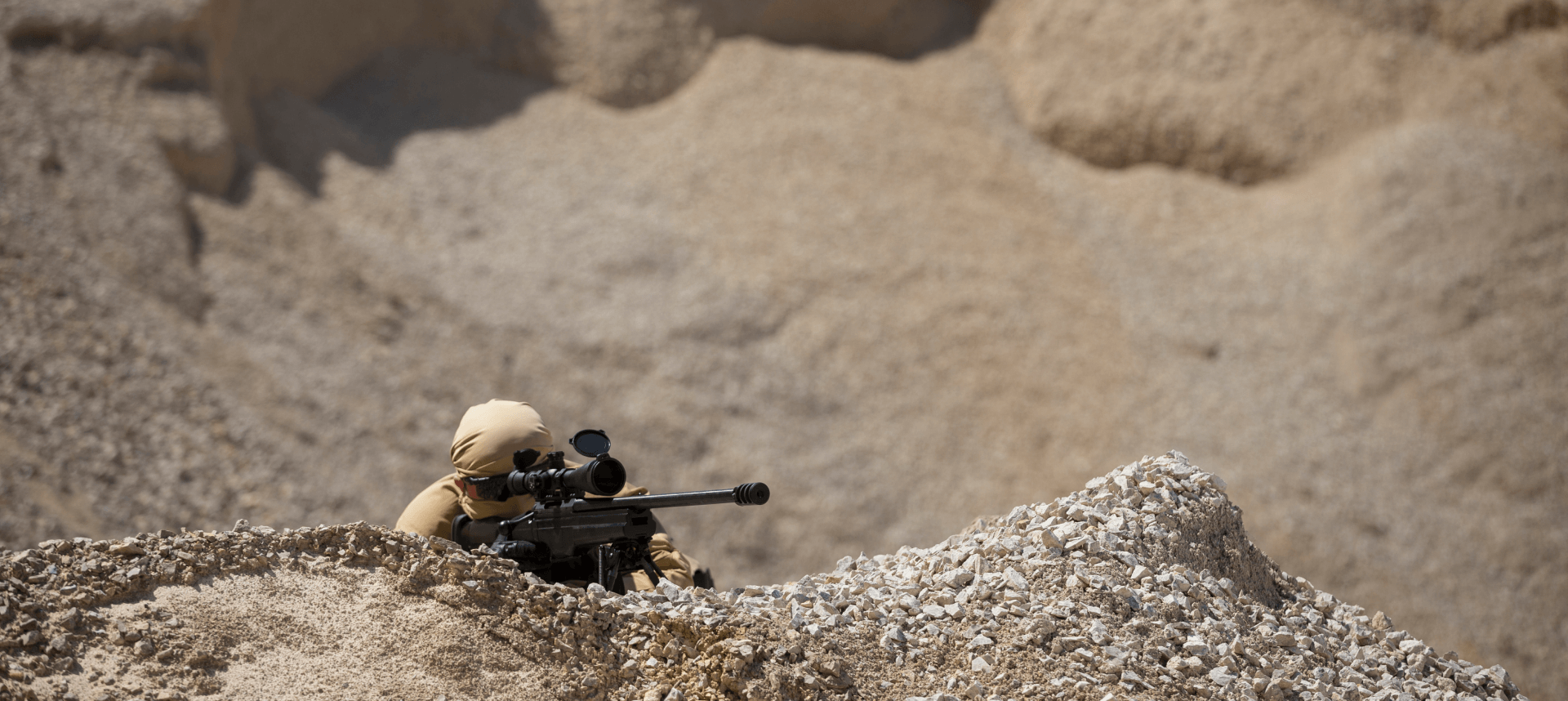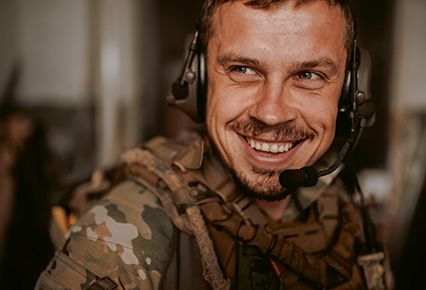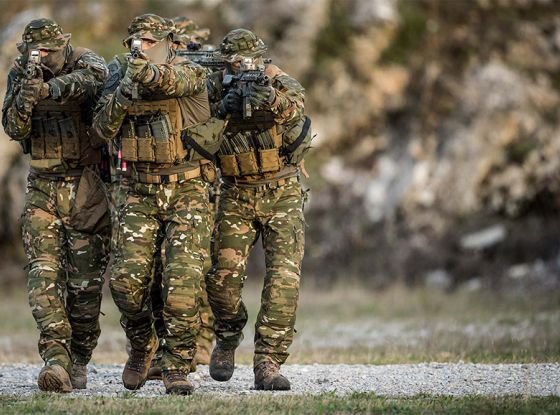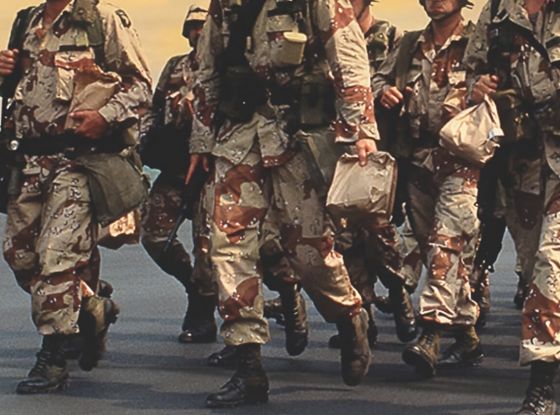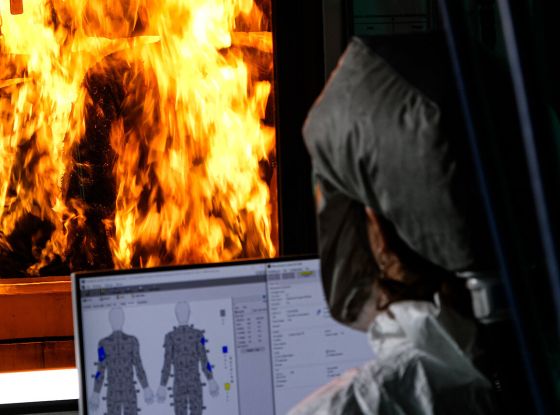One of the most common things you get told in the armed forces is to drink more. ‘Remember to drink and drink regularly!’ This you will hear throughout your career, besides, ‘change your socks’ or ‘here is some ibuprofen’.
In this blog post:
Hydration is one of the most important yet overlooked aspects of maintaining health and combat readiness in your military career. Almost all the activities you will take part in will be strenuous. Sooner or later, this will cause mild dehydration or some other heat-related conditions.
What causes of heat-related conditions
Heat-related conditions typically occur due to heat stress in hot and humid environments, but they can also happen in colder conditions.
They arise when the body accumulates more heat than it can dissipate through sweating to regulate its temperature. Severe dehydration may further decrease sweat production as the body attempts to conserve fluids. Once a critical threshold is reached, the body may stop to protect itself from further overheating.
Considering I was a combat medic, you may laugh, but I once got heat stroke and was carried away on a stretcher after a rough field exercise. Here’s what happened. I had chosen to sleep cozy and warm during the night, but suddenly we were jolted awake by mortar fire and had to move immediately. In the chaos, I didn't have time to remove any of my layers of clothing. After a while, I collapsed from overheating while trying to move with all those layers on. This resulted in me becoming a burden to my team, who had opted to endure the cold at night and were better prepared for that particular situation.
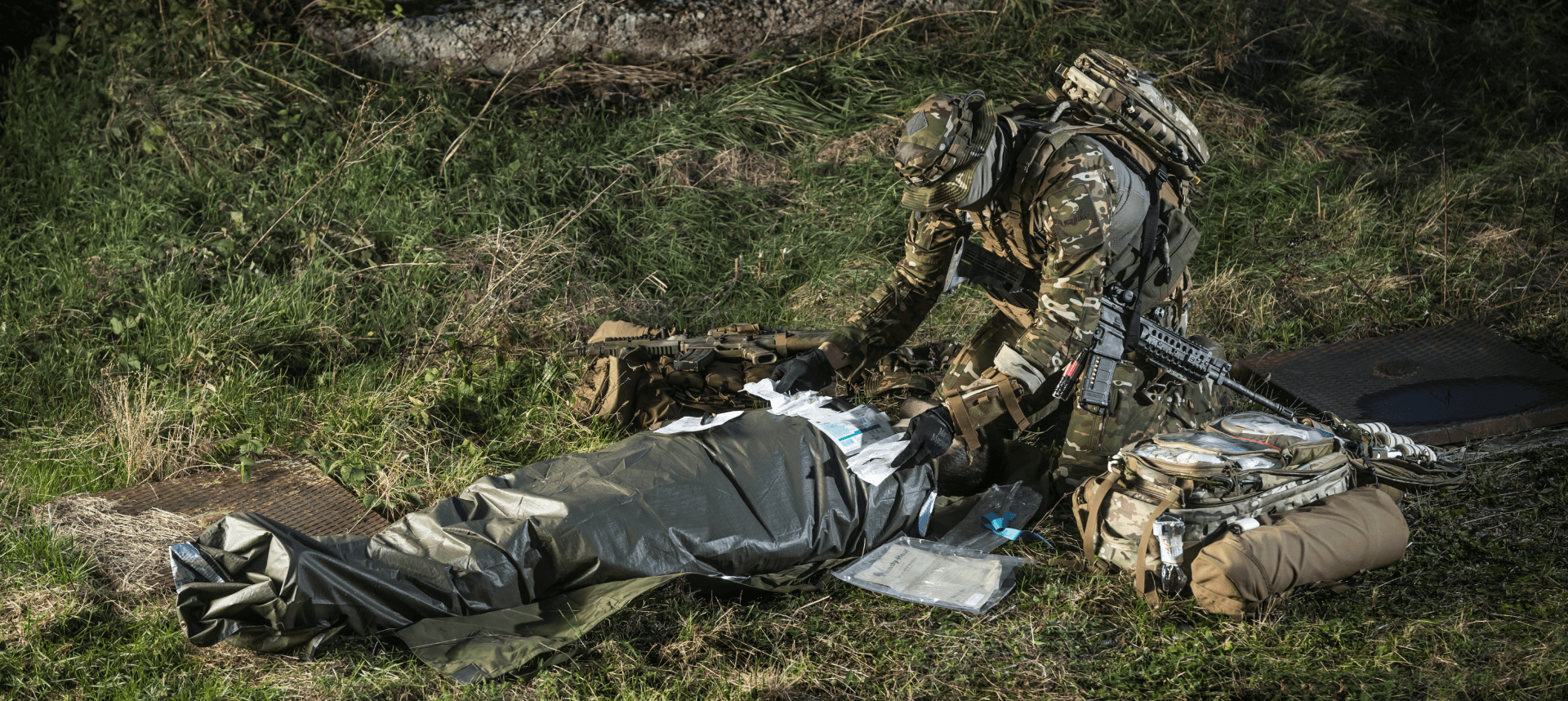
SUBSCRIBE TO UNLOCK OUR EXCLUSIVE CONTENT
Enter your email and get timely updates and relevant intel on tactical topics directly to your inbox.
You are signing up to receive updates via e-mail from which you can opt out at any time. Visit our privacy policy for more info.
Types of heat-related illnesses
To avoid heat related illnesses it is crucial to recognize the symptoms, what causes them and how they develop over time. This way, you can identify and prevent heat-related illnesses like Miliaria rubra, heat cramps, heat exhaustion, heat syncope, heat stroke, sunburns and hyponatremia.
Below is a list of the most common heat-related illnesses, how to recognize them, and how to treat them:
-
MILIARIA RUBRA
Miliaria rubra is a type of heat rash, also called Prickly heat. Usually caused when clothing rubs against skin for prolonged periods. This happens most commonly on shoulders and neck.
Small, inflamed blisters, like condensed acne, will appear. This will become progressively worse if we don’t stop scratching! It’s more of an inconvenience than a cause for concern.
Prickly heat issues are best prevented rather than having to treat. So, wear a light, loose-fitting uniform, that is also clean! If you get Miliaria rubra, the issue will progress if you are in that environment and doing the activity that caused it. Treatment will be antihistamines and various ointments. Using powder is not ideal and may actually make the situation worse as it blocks the pores and causes even more nasty irritation.
-
HEAT CRAMPS
Heat cramps are the second most common challenge faced in hot environments, especially when you’re sweating profusely while attempting to stay hydrated. This often occurs when you become so focused on your work that you neglect to replenish your electrolytes. I personally experienced this while fighting bushfires in Africa and battling forest fires in Slovenia. In these situations, your muscles may not function as they should, leading to painful spasms that can seize around the tools in your hands.
In many cases, the casualties I have encountered had only consumed plain water, which flushed out the essential salt from their bodies. In such situations, it’s crucial to move the casualty to a shaded area, away from direct sunlight. Give them time to rest and provide fluids that contain electrolytes.
Continuing to give them only plain water increases the risk of hyponatremia, which can lead to serious complications beyond just muscle cramps. This condition can result in cerebral edema and pose a significant risk of death.
-
HYPONATREMIA
Hyponatremia occurs when you drink too much water in a short period. You might think you’re staying properly hydrated, but instead, you can flush out essential salts from your body. Ultimately, this can lead to a dangerous condition known as water intoxication. The signs and symptoms can mimic those of heat stroke, resulting in additional neurological issues, altered mental status, and problems with muscle coordination.
You didn’t consume alcohol; instead, you overhydrated by drinking too much water, and now your body is exhibiting signs and symptoms similar to intoxication. It’s essential to start replenishing lost salts and get the casualty to a higher level of medical care as soon as possible.
-
HEAT EXHAUSTION
Heat exhaustion typically occurs after spending prolonged periods in a hot environment. Your heart has to work harder to maintain a normal body temperature, sweating to cool you down. Over a few days, you can lose a significant amount of fluids and salts, causing your heart to tire from constantly beating harder. If you start to feel unwell, it’s crucial for you to stop any physical activity in the heat. Move to a shaded area, remove any tight clothing, begin cooling yourself down, and drink rehydration fluids.
-
HEAT STROKE
Heat exhaustion can quickly escalate into heat stroke, which is a medical emergency. While your body was previously trying to maintain a normal temperature, it has now lost this battle and begins to shut down. You may start to vomit, experience changes in your mental state, slurred speech, profuse or absent sweating, or even become unconscious.
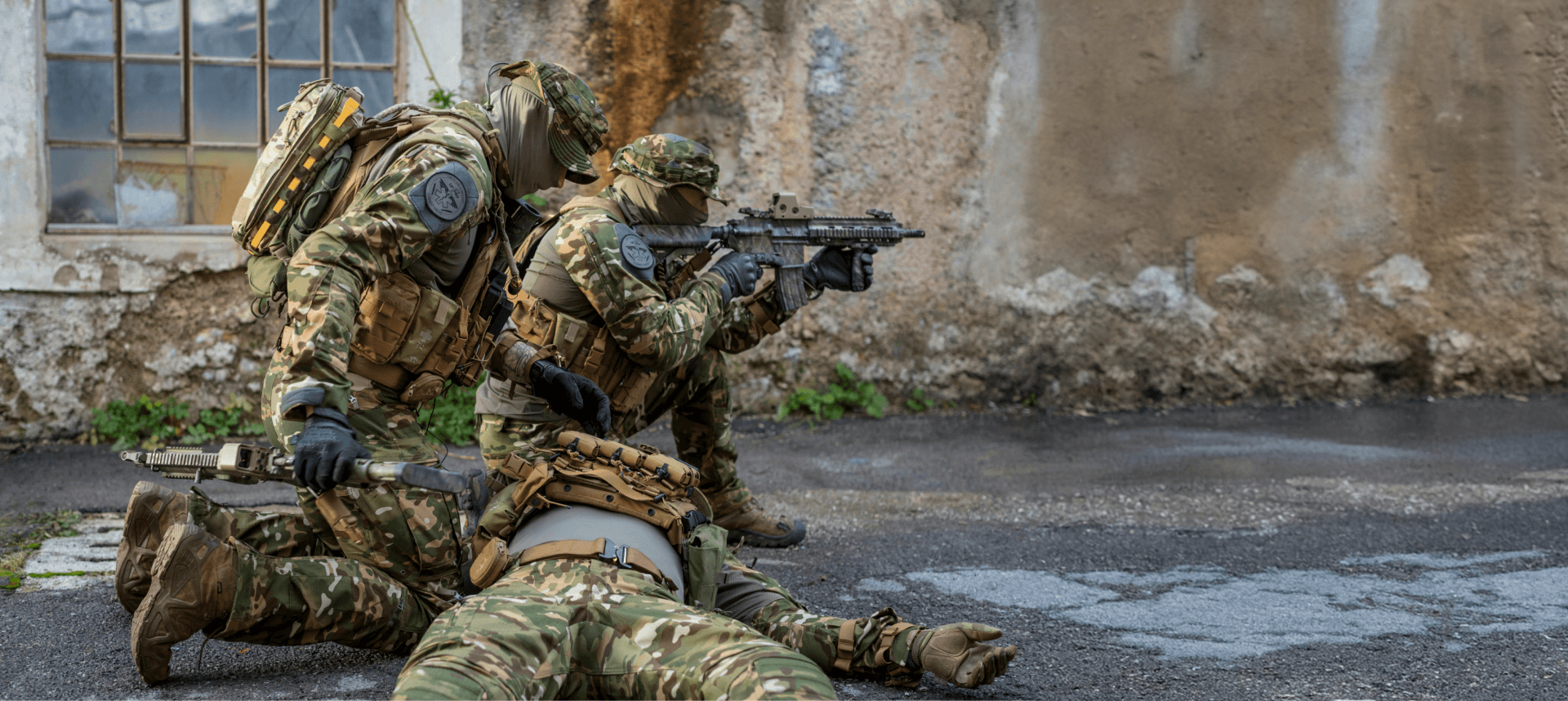
If you notice any of these symptoms, it’s critical to initiate the cooling process immediately. You can place yourself in an ice bath or wrap yourself in ice sheets—dunking yourself in the water if necessary. Make sure to maintain an open airway! If cooling this way isn’t possible, use cold packs in your armpits or groin and remove any tight or warm clothing. It's essential that you seek evacuation as soon as possible.
-
HEAT SYNCOPE
You might also simply faint, which could indicate heat syncope. This often happens if you’ve been standing in the sun for too long or kneeling for an extended period before suddenly standing up. In the field, it’s difficult to distinguish between heat syncope and heat stroke, so it’s safest to treat it as if it were heat stroke. It’s far better to regain consciousness abruptly, feeling wet, cold, and disoriented after being treated for heat stroke, than to not wake up at all.
-
SUNBURN
Sunburn - we won’t get into the weeds here. Prevent it with appropriate clothing and sunscreen.
Approaching heat-related conditions for non-medics
-
BASIC ACTIONS AND REMEDIES
As you may have realized, most actions to treat heat-related illnesses begin with a strategy that’s similar to many poison-related scenarios: the solution to pollution is dilution. However, in this case, we can’t actually "dilute" the heat—what we can do is mitigate it. These are the basic actions and remedies you can perform if you’re not a medic.
TO RECAP:
First, you need to get the casualty out of direct sunlight and into a shaded area. If there isn't any shade available, you can improvise by using a rescue blanket to create a shaded spot for the casualty.
Next, start removing their top layers of clothing, ensuring to take off any tight garments. Begin the cooling process by fanning them, cooling their armpits and groin area, pouring cold water over them, and providing cold drinks with electrolytes.
Remember to call for a medic and check to ensure there are no other issues your buddy may be experiencing.
A medic will initiate IV therapy, possibly administer benzodiazepines if the casualty is having seizures, and look for any additional or potential causes of the situation.
-
HOMEMADE ELECTROLYTE BEVERAGE
If you don’t have commercially available electrolytes, you can improvise and make your own drinks.
Mix together: “1 liter of water, a teaspoon of salt, and two oranges (for flavor and sugar). If you don’t have oranges, just add 2-3 teaspoons of sugar instead.”
Preparation for heat stress is the key to success
The best way to address heat challenges is to avoid it. However, you need to follow orders due to the nature and daily dynamic of being in the armed forces. It is impossible to avoid heat exposure completely when you are following orders. Therefore, you need to adapt and acclimatize to the heat.
-
ADAPTING YOUR BODY TO HEAT
The whole process for adapting can take 2-3 weeks. Depending on how well you are managing to adapt, this is not a fixed timeline as people vary by their physical attributes and the nature of their work. It will play to your advantage if you maintain lower body fat and have better overall physical fitness.
Try to avoid training or working out in the hottest hours of the day. If you must train or work at those times, then avoid the sun or at least have adequate rest periods.
-
ACCLIMATIZATION
Remember that you cannot acclimatize to the intense heat if you are in the country for weeks, but you are only working in an air-conditioned office or spend your days in the comforts of your room. Acclimatization happens when you are exposing your body to stressful elements which in this case is heat.
-
PHYSICAL EXERCISE
When you are in a new environment, you need to increase your fluid/salt intake and slowly progress with heat exposure. Start with short exercises in the outside heat. Progress to 1–2-hour workouts. Shorter and then later, longer ruck marches.
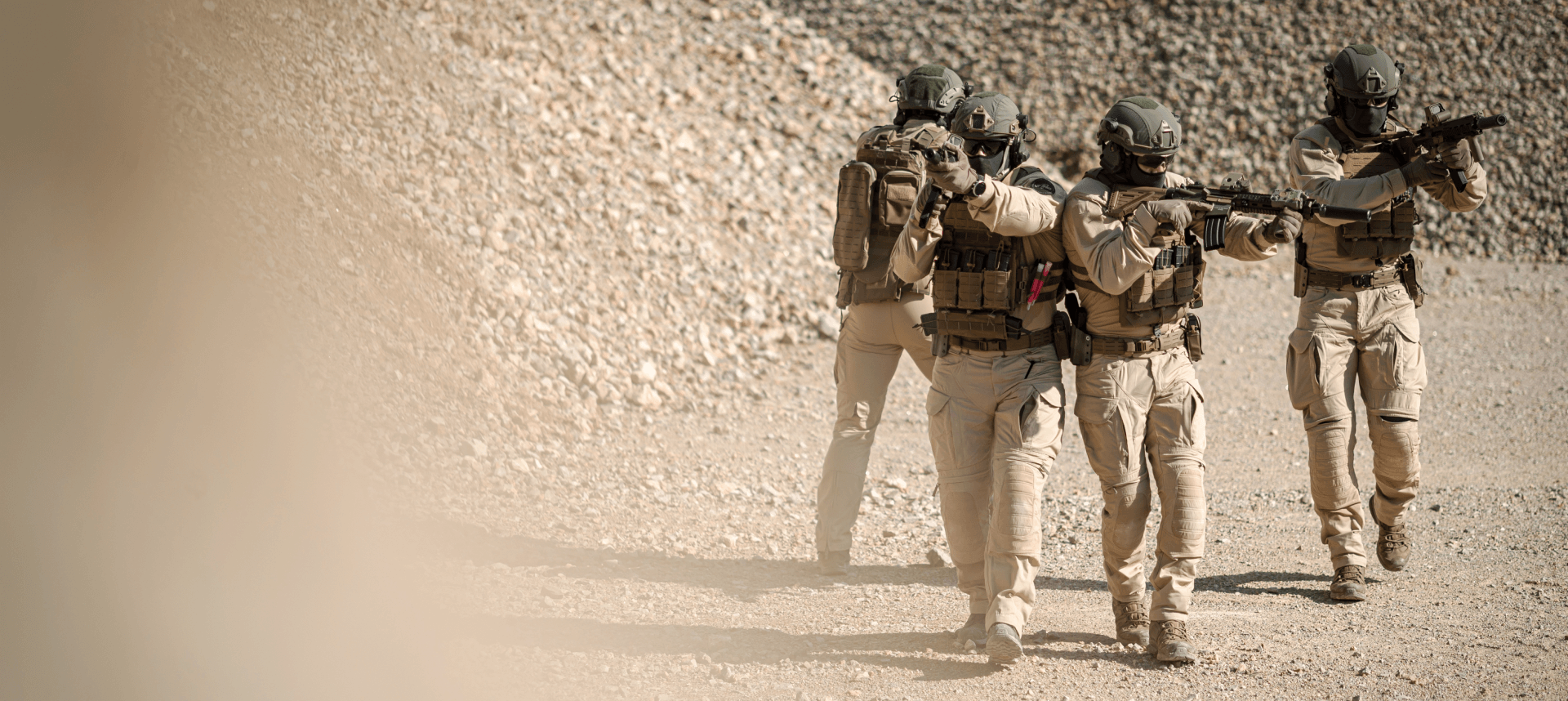
-
SAUNA
To help prepare your body for the intense heat before arriving in the new country you can also use saunas after your workouts. A couple of sauna visits before arriving in the country. This can help you reduce your acclimatization time. This is not a hack or a quick fix, so do not rely on this method, but it will help to prepare you a little more mentally and physically.
-
REST
While you acclimatize to the harsh environment, it’s essential to maintain a good balance of work and rest, and to drink plenty of electrolyte-rich beverages. Keep in mind that your body can lose between 2 to 3 liters of fluid per hour, but your intestines can only absorb about 1 liter of water per hour. You need to stay ahead of your hydration rather than trying to catch up later.
-
DEHYDRATION ACCELLERANTS
Certain pre-workout supplements and drugs should be avoided, as some can lead to increased sweating. Additionally, excessive caffeine intake can contribute to dehydration and hinder your body’s ability to cope with hot environments.
-
GEAR
While running around in your protective gear, it's crucial to evaluate which protective equipment is truly necessary for the task at hand. Consider what might hinder your capabilities. Identify the essentials, the items that are good to have, and those that merely look cool but aren’t needed. Focus on what is essential for the task, and remove any unnecessary clutter to streamline your performance.
A uniform that makes a difference
Most of these issues, aside from direct skin to sun exposure and hydration, were in one way or another connected to the uniforms we were using. As the outside temperature rose, the body was battling to cool down. If your uniforms are not designed to facilitate this then you are at additional risk of becoming a heat casualty.
Since the most effective way of reducing body temperature is by preventing the heat from building up inside our uniform and sweating, appropriate uniforms facilitate just that. By being designed specifically for hot and humid environments, they won’t itch, irritate, stick or boil you inside.
So, look for a uniform that is breathable, provides airflow, dries fast and feels pleasant to the skin. The kind that keeps you comfortable and optimally combat-ready.
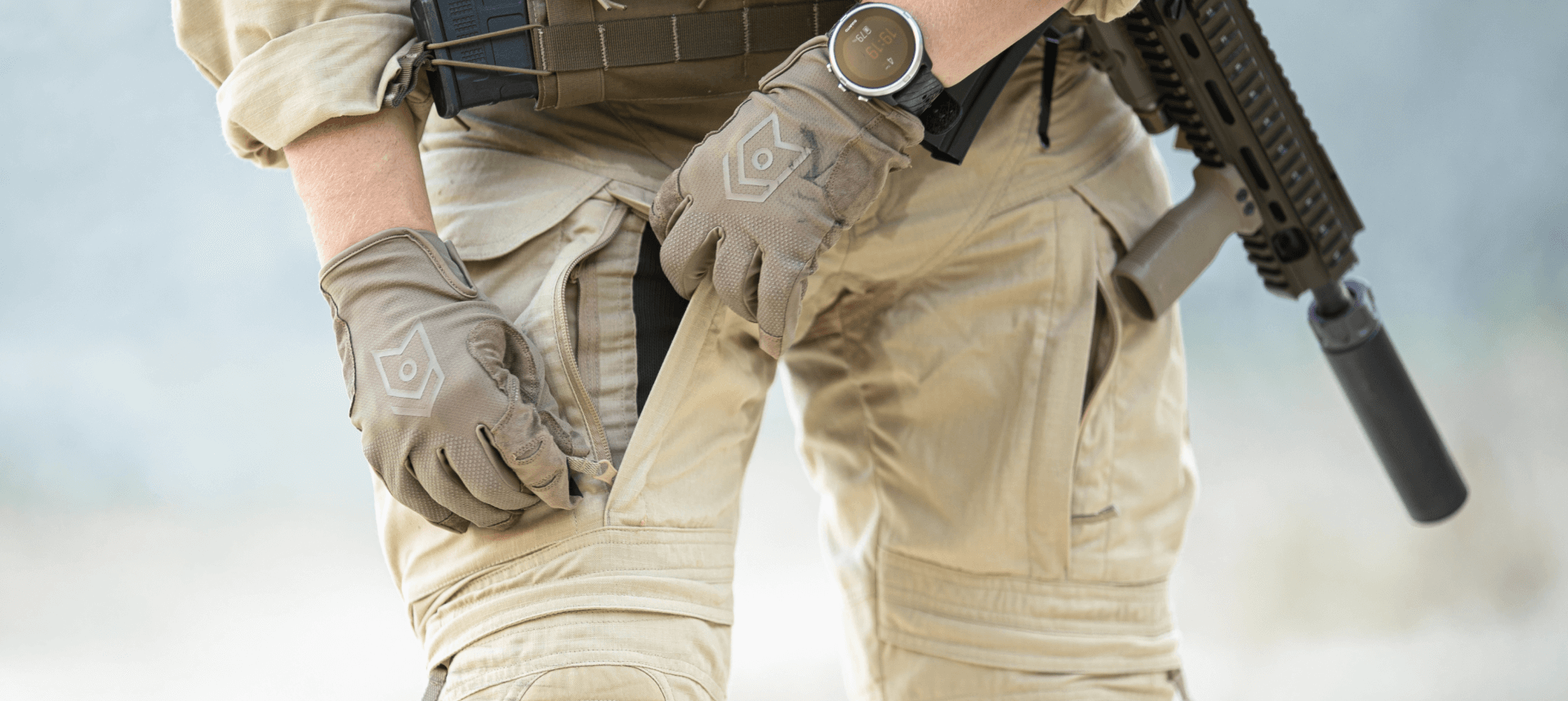
Conclusion
In the military, constant instructions can sometimes feel restrictive, but there's one command you should never ignore: staying hydrated is crucial. Proper liquid intake, timing, and dosing, along with acclimating your body to heat, are essential for peak performance. Ultimately, understanding how to prevent heat-related injuries and selecting the right gear are vital for maintaining both health and effectiveness in the field.

